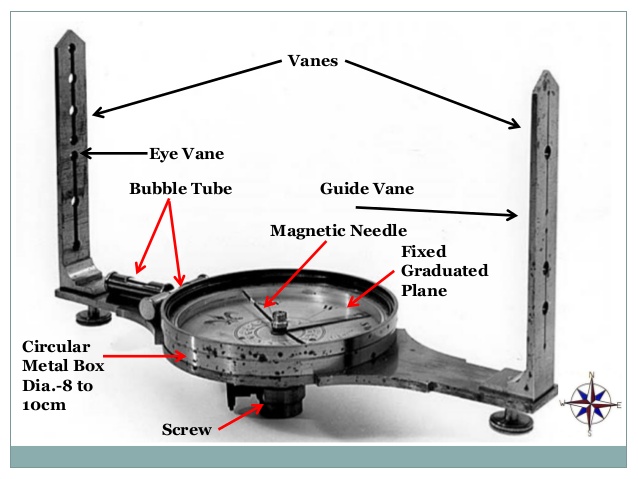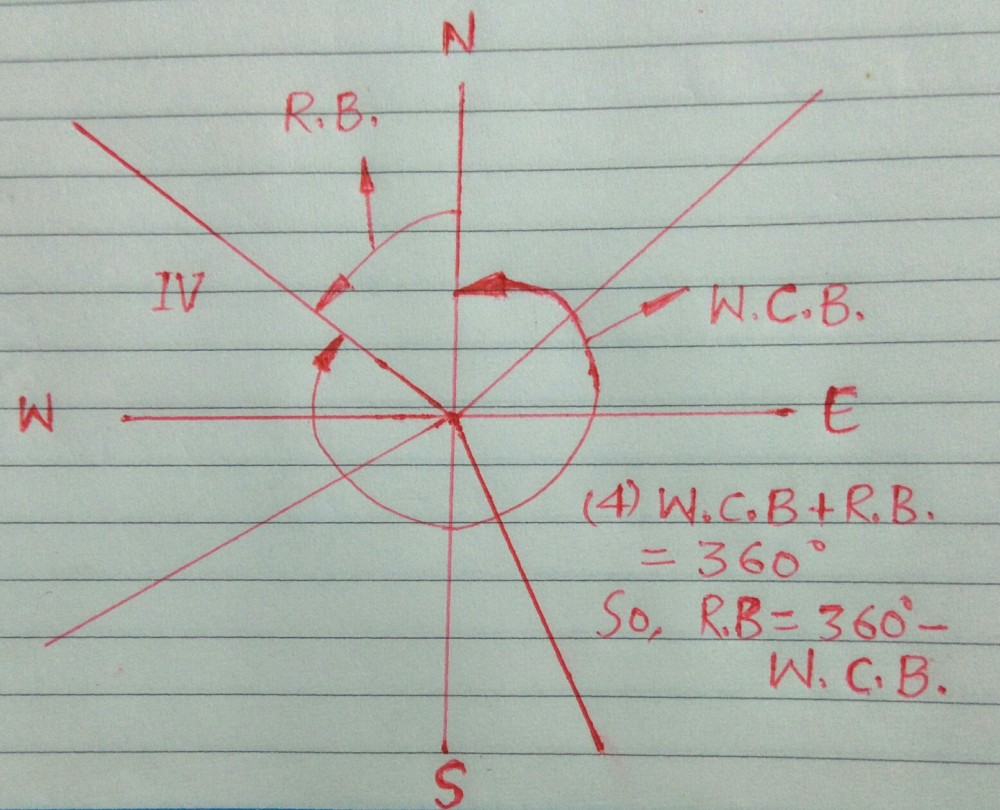
Chain surveying can be used when the area to be surveyed is comparatively small and is fairly flat. However, when large areas are involved. methods of chain surveying alone are not sufficient and convenient. In such cases, it becomes essential to use some sort of instrument which enables angles or directions of the survey lines to be observed. In engineering practice, following are the instruments used for such measurements :
(a) Instruments for the direct measurement of directions :
(i) Surveyor’s Compass
(ii) Prismatic Compass
(b) Instruments for measurement of angles
(1) Sextant
(2) Theodolite
Traverse Survey : Traversing is that type of survey in which a number of connected survey lines form the framework and the directions and lengths of the survey line are measured with the help of an angle (or direction) measuring instrument and a tape (or chain) respectively. ‘When the lines form a circuit which ends at the starting point, it is known as a closed traverse. If the circuit ends elsewhere, it is said to be an apen traverse.
CONCEPT OF ANGLE IN COMPASS SURVEYING
1) Always, the angle is measured from north side
Not traditionally
2) Quadrant in engineering is taken as
Not like below
DESIGNATION OF BEARINGS
The common system of notation of bearing are:
(a) The whole circle bearing (W.C.B.) Or Azimuthal system
In this system bearing of a line is measured with magnetic North ( or with south) in clockwise direction. The value of bearing thus varries from zero degree to 360 degree. Prismatic compass is graduated on this system. In India and UK the WCB is measured clockwise with magnetic north.
(b) The Quadrantal bearing ( Reduced bearing ) R.B
In this system bearing of a line is measured East ward or west ward from North or South whichever is nearer. Thus both North and South are used as reference meridians and the direction can be either clockwise or anticlockwise depending upon the position of the line. In this system therefore, the quadrant, in which the line lies, will have to be mentioned. These bearings are observed by surveyor’s compass.
For a closer look
HOW TO CONVERT W.C.B. TO R.B.
(1) For the first quadrant the W.C.B will be equal to R.B. because both of them it starts from the north the directions. for R.B. direction will be North to East (NE)
(2) For second Quadrant
W.C.B.+R.B. = 180° SO [ R.B.=180°-W.C.B.]
The directions for reduced bearing is South to East (SE)
(3) For third Quadrant
W.C.B.-R.B.=180°. SO R.B.=W.C.B.- 180°
The direction for reduced bearing is South to East (SE)
(4) For fourth Quadrant
W.C.B.+R.B.=360° SO R.B.=360-W.C.B.
The direction for reduced bearing is north to west (NW)
So overall list
CONVERSION OF R.B. INTO W.C.B.
Just use simple mathematics formula and remember W.C.B. has no direction. For example in 3rd quadrant
R.B.=W.C.B.-180°
So W.C.B.=R.B.+180°
SO overall list
©ALL RIGHT RESERVED
Contact me@ urnemat@gmail.com



















Nice information
Thanks for graphs.
LikeLike
Great
LikeLike
Thanks a lot
LikeLike
I’m writing to let you be aware of of the brilliant experience my cousin’s child undergone using your blog. She came to find so many details, most notably what it is like to have an awesome teaching mindset to let most people really easily know a variety of complicated matters. You truly did more than visitors’ expected results. Many thanks for delivering those helpful, healthy, educational and as well as cool tips about your topic to Jane.
LikeLike